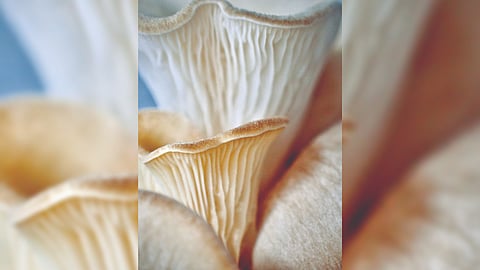

NEW YORK: Consider the oyster mushroom. It’s a mild thing, a pert, often creamy-coloured whorl of fungus that goes well with thyme sautéed in butter.
But among scientists who study mushrooms, it has earned a reputation for activities more sinister than you’d expect from a fungus found in fine dining. The oyster mushroom is a carnivore.
The mushroom’s usual diet of damp logs is low in nitrogen. To get that essential element, it feeds on microscopic nematodes, a type of worm. When a worm makes the mistake of passing over the fungus, the oyster mushroom paralyses and kills it, devouring the animal’s nitrogen-rich flesh with root-like tendrils called hyphae.
Outside the animal kingdom, Venus flytraps, pitcher plants and others are well known for their macabre meal-making. But fungi, too, have an appetite for flesh, and it’s not just the oyster mushroom, although it is the only carnivorous fungus you’ll generally find in your grocery store.
Some fungi craft sticky nets laced with tempting scents to snare their prey. Others create deadly collars that constrict as the worm struggles, immobilizing the prey as the fungus’s hyphae penetrate its body.
Some even release tiny sickle-shape spores that, when swallowed by a nematode, wreak havoc from within. The scenarios all end with the worm’s body invaded by the threads of its hungry captor.
The oyster mushroom’s weapon of choice seems to be a toxin: Worms that touch the fungus are paralyzed, and their cells fall apart as they succumb to the hyphae.
In a paper published Wednesday in the journal Science Advances, researchers report that they’ve identified the substance, which is contained in globes that they compare to lollipops.
To the scientists’ surprise, it is a fairly common molecule, rather than an exotic, highly evolved substance. But to the hapless worms, it’s deadly.
Before they knew the toxin’s identity, the researchers were familiar with its effects, said Yen-Ping Hsueh, a researcher at the Institute of Molecular Biology of the Academia Sinica in Taiwan, and an author of the new paper.
In 2020, the team described how toxins get into worms’ bodies through the sensitive tips of the creature’s small sensing organs.
“They really paralyse the worms within a minute,” Dr. Hsueh said. “It’s very dramatic.”
Once the toxin reaches the worm’s neurons and muscle cells, it destabilizes the normal flow of ions across the cells’ membranes, causing catastrophic failure.
For their latest paper, Dr. Hsueh and her colleagues used ultraviolet rays and a chemical that causes mutations on oyster mushrooms and looked for individuals whose touch did not kill worms.
They found that all of these fungal mutants lacked small globes called toxocysts that hang like fruit from the hyphae. These, they reasoned, must be where the substance was kept.
But perhaps, Dr. Hsueh said, understanding how the oyster mushroom came to use this substance as a toxin and what triggers the creation of toxocysts could open the door to a new kind of pest control. If oyster mushrooms could be made to arm themselves, even in the richness of a fertilized field, we might someday see their talents for destruction deployed on our behalf — and not just in the service of making themselves plumper and tastier for our plates.
Visit news.dtnext.in to explore our interactive epaper!
Download the DT Next app for more exciting features!
Click here for iOS
Click here for Android